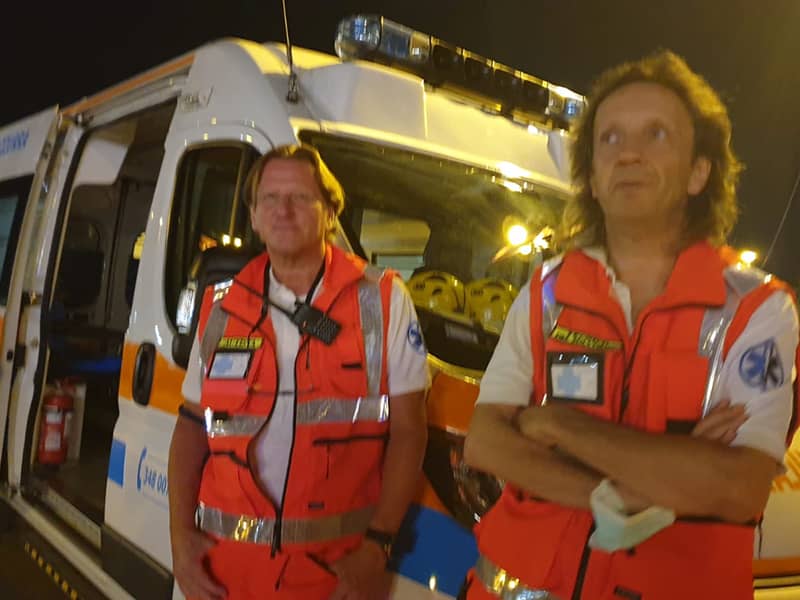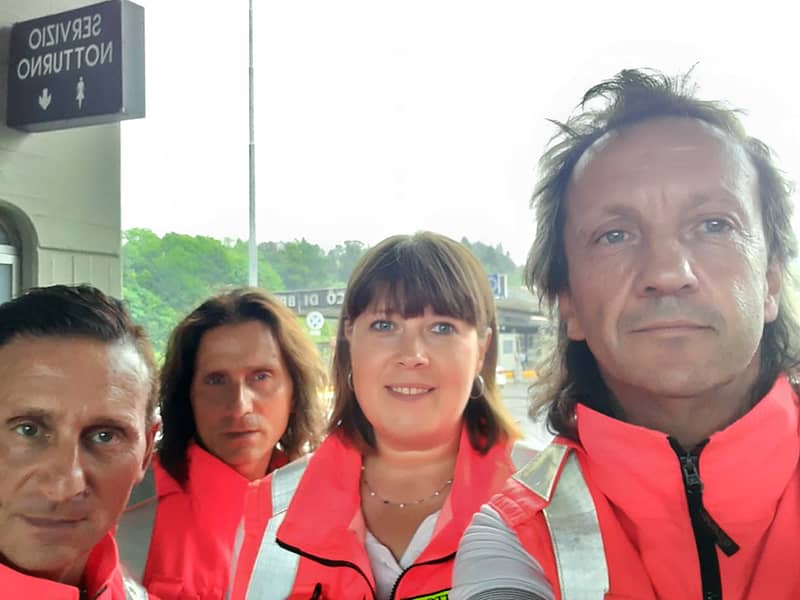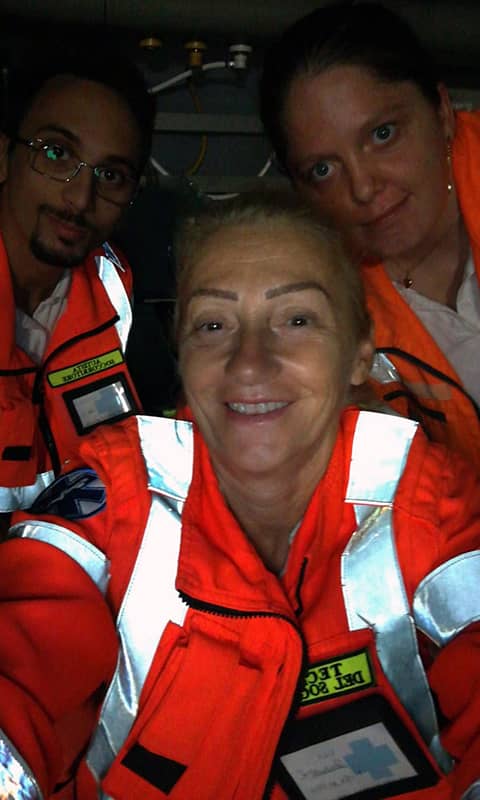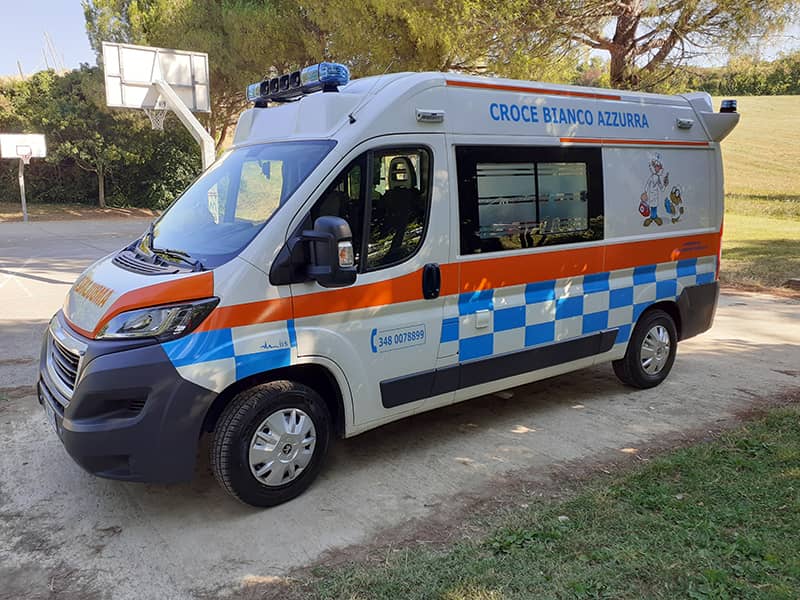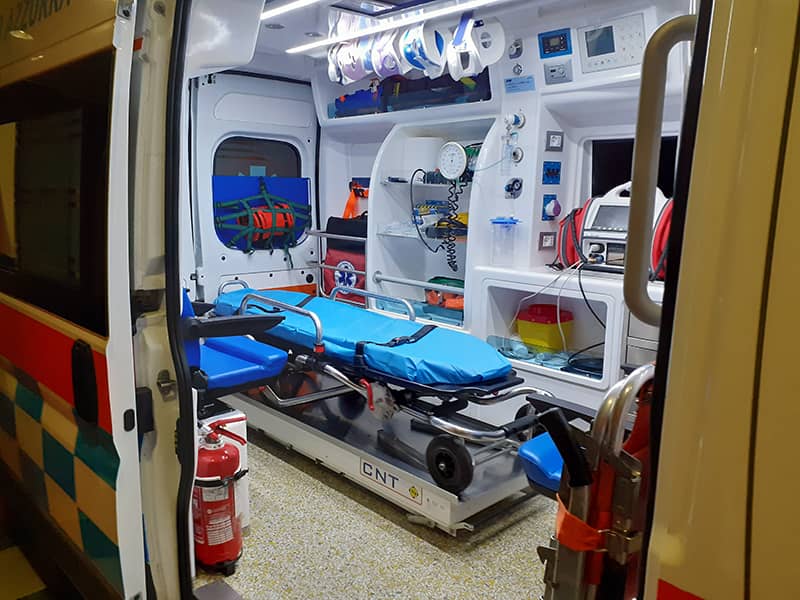LIGHT BLUE & WHITE CROSS
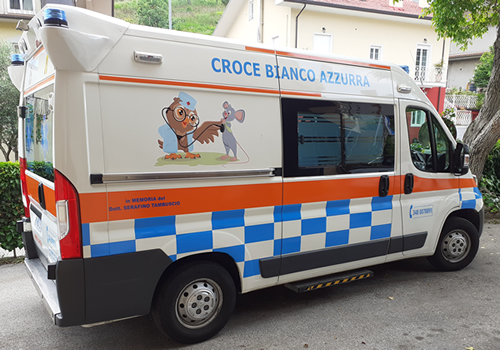
AMBULANCE SERVICE
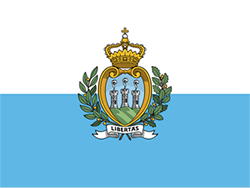
SAN MARINO
Registered office c/o Via Ludovico Zuccolo 3 Serravalle 47899
Ambulances storage c/o Via N. Tommaseo 16 Serravalle 47899
Representative office - Via H. Bustamonte 3 Serravalle 47899
Republic of San Marino.
Phone +378 0549 900396 - +39 348 0078899 - +39 338 8357117
info@crocebiancoazzurra.com
“Every little thing we do is part of a huge, stellar, cosmic cog, universal and every little brick we put into the construction of life is a brick which will remain an example and culture to all those who follow”.
Dr. Gian Luca Mazza, Association co-founder (anthropologist researcher & paramedic).
Dr. Gian Luca Mazza, Association co-founder (anthropologist researcher & paramedic).
WHO WE ARE
Born on December 28, 2011, and operating since June 10, 2012, Light Blue & White Cross was created out of a strong passion in the socio-health field of the founding members. A passion that primarily focuses on the training of the operators themselves, all volunteers, and which has the sole objective of always operating correctly and professionally. Anyone can enter, but to stay there you must first of all love your neighbor, understand the sensitivity of people and continually get back into the game. An important phrase often circulates in our association:
“How would you like health workers to be called to take care of a person dear to you?”
“How would you like health workers to be called to take care of a person dear to you?”
WHAT DO WE DO
The functions of ambulances are three; transport of people in the form of an emergency, transport in the form of non-emergency, such as accompanying people for medical examinations, hospitalizations or hospital discharges, and health care in sporting, cultural and concert events.
OUR MEANS
We have ambulances equipped with health facilities including multi-parametric monitors, dedicated to measuring blood pressure, saturation, that is, the amount of oxygen present in the blood, heart rate and with the possibility of carrying out an electrocardiogram during an emergency. In addition, sets of oxygen cylinders, defibrillators and everything needed to manage trauma and dressings.
THE TRAINING COURSE
Reading the paragraphs cited above, we can understand how important a targeted and excellent training course is. The primary training period, that is, the one that then allows the volunteer to be authorized to carry out the primary procedures registered by the health authority of reference, has a duration from 200 hours 'til 1200 hours to be completed in a period of no less from 6 months to three years. This is a type of path that includes continuous and evolutionary updates on urgent-emergency procedures that often evolve and allow the operator to always be in line with current protocols. Below is the list of our crews in the relevant service request situations:
Secondary Transport Unit – An ambulance driver and a basic rescue for accompanying medical examinations and hospital discharge: Crew chief (first aid operator - first response) with over 200 hours of theoretical-practical training and no less than six mounts of operation on ambulances. This mobile unit is enabled for the management of the semi-automatic defibrillator (BLSD).
Basic Life Support Unit – An ambulance driver and a effective rescue or an internship EMT for medium & low risk generic events, hospital admissions: Crew chief (EMT Basic) with over 400 hours of theoretical-practical training and no less than one year of operation on ambulances. The BLS Unit is enabled for the management of the semi-automatic defibrillator (BLSD) and for the management of the traumatic patient in the pre-hospital phase (PTC). This Unit can also monitor vital parameters (blood pressure, saturation, heart rate, respiratory rate), oxygen management, wound management, final patient card.
Immediate Life Support Unit – An ambulance driver with one year of experience and an emergency medical technician (or an internship paramedic) for high risk generic events, critical hospital admissions, health emergencies: Crew chief (EMT - P) with over 1200 hours of theoretical-practical training and no less than three years of operation on ambulances. The ILS Unit is enabled for the management of the semi-automatic defibrillator (BLSD), for the management of the pediatric semi-automatic defibrillator (PBLSD), for the management of the traumatic patient in the pre-hospital phase (PTC), for the management of the patient in the pre-cardiac arrest (ILS) and group psychological management during health emergencies. This Unit can also monitor vital parameters (blood pressure, saturation, heart rate, respiratory rate), oxygen management, 3, 5, 12 lead ECG, oropharyngeal canula management, laryngeal cannula (I-GEL) management, anaphylactic shock management, DXT (blood sugar), wound management, final patient card.
Advance Life Support Unit – An ambulance (or medic car) driver with one year of experience and a paramedic (or a medical emergency doctor) for all types of health emergency in pre-hospital phase.
To be an ambulance driver – To become an ambulance driver it is necessary to have a category B driving license, to be 21 years of age and to attend a series of internal courses which include rescue and transport simulations. In these simulations the volunteer learns to interact with their colleagues and gradually becomes aware of the work in general. On average, with a little consistency, it is possible to carry out transport as a driver within 3/5 months. In addition, advanced driving courses are also held to constantly update the driver on any changes in national operating protocols.
PS. The entire training course to become a rescuer or driver is free with the exception of courses organized by healthcare facilities or accredited bodies. It is good to point out that the volunteer is not obliged to participate in the aforementioned courses and can always and always do some, greatly appreciated, volunteering.
Secondary Transport Unit – An ambulance driver and a basic rescue for accompanying medical examinations and hospital discharge: Crew chief (first aid operator - first response) with over 200 hours of theoretical-practical training and no less than six mounts of operation on ambulances. This mobile unit is enabled for the management of the semi-automatic defibrillator (BLSD).
Basic Life Support Unit – An ambulance driver and a effective rescue or an internship EMT for medium & low risk generic events, hospital admissions: Crew chief (EMT Basic) with over 400 hours of theoretical-practical training and no less than one year of operation on ambulances. The BLS Unit is enabled for the management of the semi-automatic defibrillator (BLSD) and for the management of the traumatic patient in the pre-hospital phase (PTC). This Unit can also monitor vital parameters (blood pressure, saturation, heart rate, respiratory rate), oxygen management, wound management, final patient card.
Immediate Life Support Unit – An ambulance driver with one year of experience and an emergency medical technician (or an internship paramedic) for high risk generic events, critical hospital admissions, health emergencies: Crew chief (EMT - P) with over 1200 hours of theoretical-practical training and no less than three years of operation on ambulances. The ILS Unit is enabled for the management of the semi-automatic defibrillator (BLSD), for the management of the pediatric semi-automatic defibrillator (PBLSD), for the management of the traumatic patient in the pre-hospital phase (PTC), for the management of the patient in the pre-cardiac arrest (ILS) and group psychological management during health emergencies. This Unit can also monitor vital parameters (blood pressure, saturation, heart rate, respiratory rate), oxygen management, 3, 5, 12 lead ECG, oropharyngeal canula management, laryngeal cannula (I-GEL) management, anaphylactic shock management, DXT (blood sugar), wound management, final patient card.
Advance Life Support Unit – An ambulance (or medic car) driver with one year of experience and a paramedic (or a medical emergency doctor) for all types of health emergency in pre-hospital phase.
To be an ambulance driver – To become an ambulance driver it is necessary to have a category B driving license, to be 21 years of age and to attend a series of internal courses which include rescue and transport simulations. In these simulations the volunteer learns to interact with their colleagues and gradually becomes aware of the work in general. On average, with a little consistency, it is possible to carry out transport as a driver within 3/5 months. In addition, advanced driving courses are also held to constantly update the driver on any changes in national operating protocols.
PS. The entire training course to become a rescuer or driver is free with the exception of courses organized by healthcare facilities or accredited bodies. It is good to point out that the volunteer is not obliged to participate in the aforementioned courses and can always and always do some, greatly appreciated, volunteering.
HOW WE FINANCE THE ASSOCIATION
The first financing was made by us founding members. We put a few thousand euros out of our pockets and bought our first used ambulance, the legendary CBA 1. The loan below includes the request for reimbursement of expenses for the various services offered; discharges and hospital admissions, accompanying medical examinations, health care in sporting events, parties, concerts and various emergency stations.
WHAT WE DO BESIDES BEING VOLUNTEERS
Within the association there are students, pensioners, housewives, freelancers, generic workers, medic doctors, paramedic and unfortunately also some people awaiting employment.
HOW MUCH IT COST TO JOIN “LIGHT BLUE & WHITE CROSS”
The volunteer pays nothing, God forbid. As previously written, advanced courses are not mandatory and are required only for those who opt to also do emergency services. For the rest, only the membership fee of 10 Euro per year is required. As for availability, we require a minimum of two monthly presences in order to always guarantee the standard registered by the association.
WHY TRY IT
Sometimes we make bets with ourselves and maybe we don't know why. You love something and try to sensitize it, to raise it. That's exactly how works, books, poems, songs, scientific discoveries, etc. were born and then divulged. Reading historical biographies, one realizes that very often discoveries were made simply because one loved or believed in a dream. We also understand that today talking about dreams is not always realistic, especially in dizzyingly fast companies and where very often things must have an immediate economic response. But, if sometimes, even rarely, some dreams that you had as children emerge in you, and of course you have not completely atrophied them, then perhaps you could make a thought of getting into an ambulance and being, even if only for an hour, of help someone.
StudioPasquali - total responsive web solutions - year 2021


